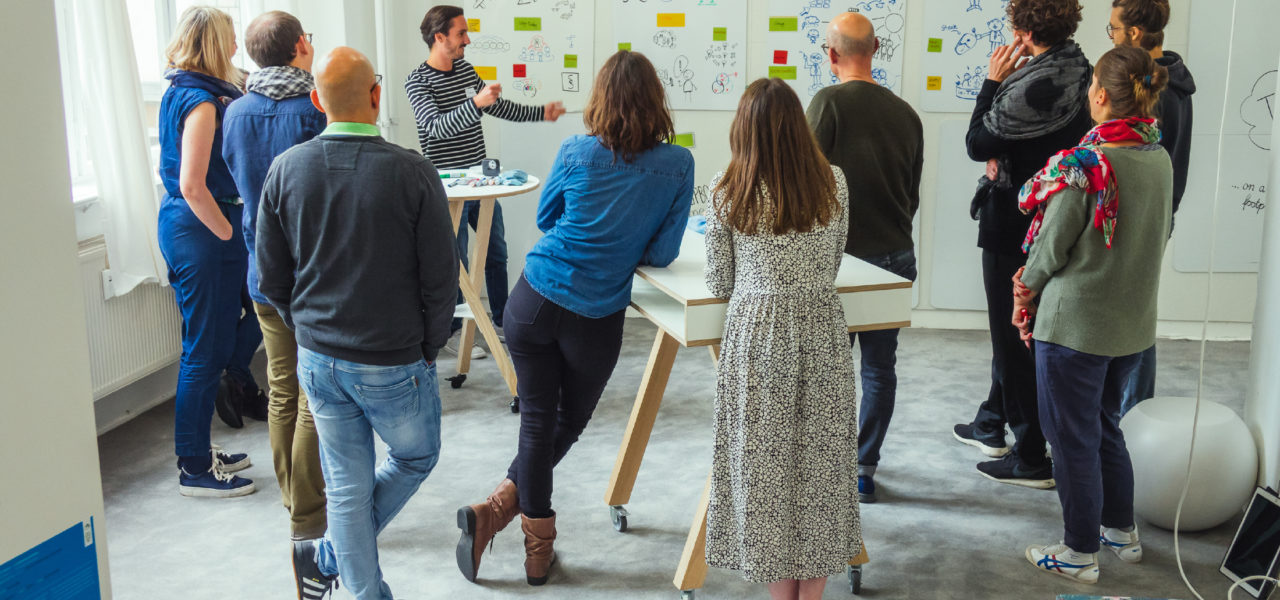
The proof of the pudding is in the eating – the didactic model of launchlabs
The proof of the pudding is in the eating
– the didactic model of launchlabs
I consciously dealt with different learning models for the first time in my role as track manager at the HPI D-School. Students from different disciplines learned about the iterative process of user-centered innovation based on the current challenges of our project partners. In a short period of time, the teams immersed themselves in complex specialist topics through research and experimentation, for example, the behavior of dementia patients, DHL logistics chains or supermarket refrigeration systems. The focus was on immersion.
Immersion in adult education ensures a sustainable learning process, as learners first and foremost are linking the news to their previous knowledge and experience. Making connections is fundamental to understanding the meaning and content of the new. We use this principle as a didactic model for our trainings at launchlabs. First comes practice, then theory. In our learning labs (trainings), exercises begin with a short instruction, then the participants try out the exercises themselves and after they have gained practical experience, we dive into the theoretical background together. The subsequent discussion is thus more profound and lively – because everyone has established links to his or her previous knowledge and everyone benefits from the exchange. The result is a large network of various points of contact and contexts.
“Feels funny”
The curriculum of our Agile Coach and Leadership Program makes extensive use of this model. For example, we first ask the participants what they think the purpose of agile work is and let them work it out in small groups before we share our view of things afterwards.
However, the model is not as banal as it sounds. Our participants are thoroughly irritated. From school and university we are used to getting the contents explained and the theoretical framework conveyed. Experience shows that this is also a very German attitude, first wanting to understand before I try something out. And yet our experience shows that trying and then studying leads to a deeper understanding.
A theoretical foundation belongs to it
After the participants have tested and experienced by themselves, an explanation of the theoretical background is essential. The models and exercises we use are always scientifically based or at least empirically developed. Be it the “Four Rooms of Change” by Claes Jannssen or the “Team Clock” by Bruce Tuckman. Basically, the examination of context, model and the philosophy behind it is an important key to success.
What are your experiences with this or other didactic models? How do you experience learning processes in your company? Please feel free to contact me. I am looking forward to the exchange.
Harald Gögl